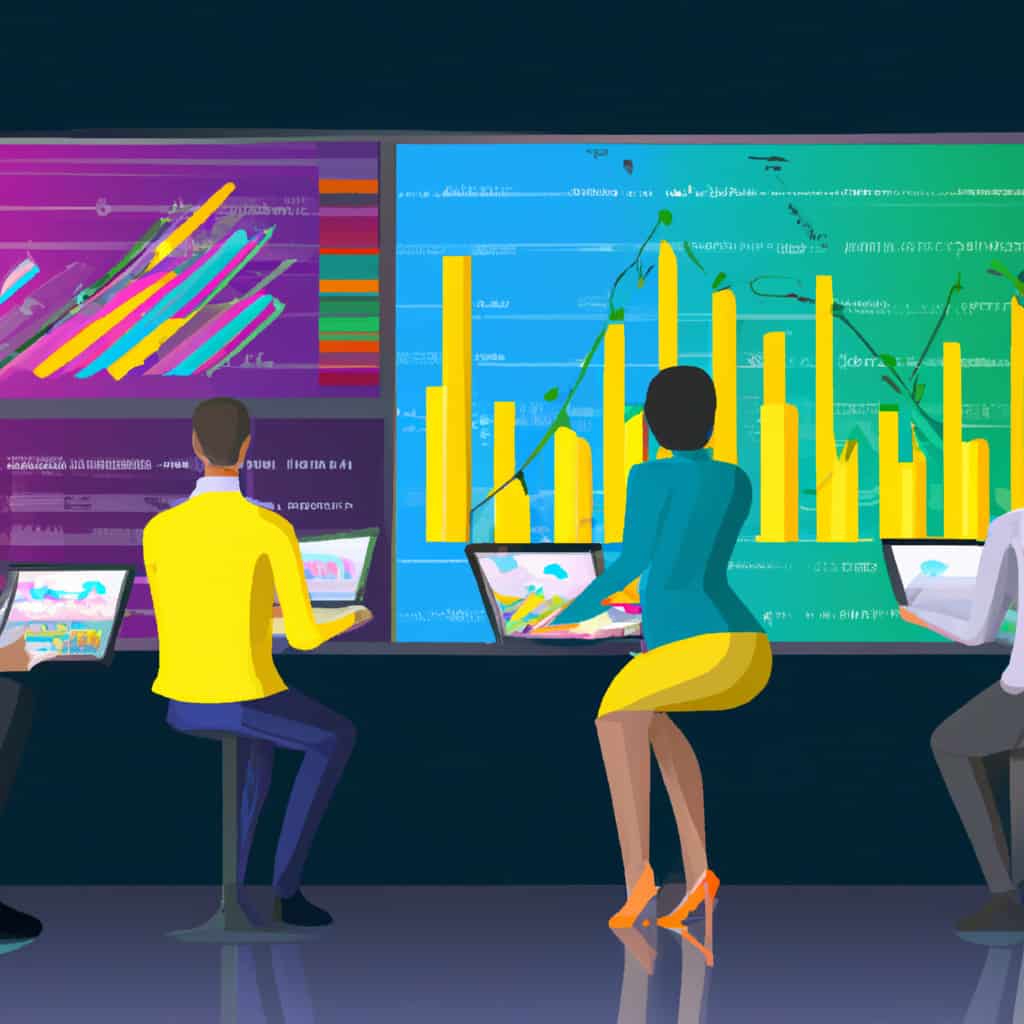In the realm of modern business, the effective utilization of data has become increasingly crucial for organizations seeking to drive sustainable growth. This article aims to unveil the top five business intelligence tools that possess the capability to transform an organization’s data into actionable insights.
By exploring a range of features such as data visualization, advanced analytics, dashboards, and reporting capabilities, businesses of all sizes can make informed decisions, identify trends, and optimize their processes.
This analytical and data-driven approach will enable organizations to unlock the full potential of their data, fostering a sense of belonging among the audience.
Key Takeaways
- Data visualization allows organizations to communicate complex data sets through graphical representations.
- Advanced analytics provides valuable insights for decision-making and trend identification.
- Dashboards provide a user-friendly interface displaying key metrics and performance indicators.
- Reporting tools generate comprehensive and accurate reports for informed decision-making.
Unleash the Power of Data Visualization
Data visualization is a powerful tool that allows organizations to effectively communicate complex data sets through the use of graphical representations. It enables users to transform raw data into visualizations that are easy to interpret and understand.
One key feature of data visualization is the ability to create interactive dashboards, which provide users with the flexibility to explore and analyze data in real-time. These dashboards allow for a more immersive and engaging experience, enabling users to drill down into specific data points and uncover valuable insights.
Additionally, data visualization plays a crucial role in data-driven decision making. By presenting data in a visual format, decision makers can quickly and easily identify patterns, trends, and correlations, leading to more informed and strategic decisions.
Overall, data visualization is an essential tool for organizations looking to make sense of their data and drive effective decision making.
Harness Advanced Analytics for Insights
Advanced analytics provides valuable insights that can inform decision-making, identify trends, and optimize various business processes. Leveraging predictive modeling and data mining techniques, organizations can extract meaningful patterns and relationships from large datasets, enabling them to make data-driven decisions.
Here are four key ways in which advanced analytics can empower businesses:
-
Improved decision-making: By analyzing historical data and applying predictive modeling techniques, organizations can gain a deeper understanding of customer behavior, market trends, and potential risks, enabling them to make more informed decisions.
-
Trend identification: Advanced analytics can help businesses identify emerging trends and patterns in their data, allowing them to proactively respond to market changes and stay ahead of the competition.
-
Process optimization: By analyzing operational data, organizations can identify inefficiencies, bottlenecks, and areas for improvement, leading to optimized business processes and increased productivity.
-
Enhanced customer experience: Advanced analytics enables businesses to analyze customer data and personalize their offerings, resulting in improved customer satisfaction and loyalty.
Overall, harnessing advanced analytics techniques such as predictive modeling and data mining can provide organizations with valuable insights that can drive business growth and success.
Streamline Decision-Making With Dashboards
Streamlining decision-making with dashboards can provide organizations with a user-friendly interface that displays key metrics and performance indicators, allowing for efficient and data-driven decision-making processes. Dashboards are powerful tools that enable organizations to improve decision making and enhance data-driven strategies.
By presenting relevant data in a visually appealing and easily understandable format, dashboards enable users to quickly analyze and interpret information, enabling more informed decision making. These dashboards can be customized to display specific metrics and performance indicators that align with an organization’s goals and objectives.
Additionally, dashboards can provide real-time updates, enabling users to stay up-to-date with the latest information and make timely decisions.
Overall, implementing dashboards can significantly improve decision-making processes and enhance the effectiveness of data-driven strategies within organizations.
Maximize Efficiency With Reporting Capabilities
Maximizing efficiency with reporting capabilities allows organizations to generate comprehensive and accurate reports that provide valuable insights and support informed decision-making processes. By leveraging reporting tools, businesses can improve productivity and enhance performance by efficiently analyzing and presenting data in a meaningful way.
Here are four ways reporting capabilities can maximize efficiency:
-
Streamlined data collection: Reporting tools automate data collection from various sources, eliminating the need for manual data entry and reducing errors. This streamlines the process and saves time.
-
Data visualization: Reporting tools offer visual representations of data, such as charts and graphs, making it easier to understand complex information at a glance. This enhances decision-making and facilitates data-driven discussions.
-
Customizable reports: Reporting tools allow organizations to create customized reports based on specific requirements. This flexibility ensures that the reports generated are tailored to address the unique needs of the business.
-
Automation and scheduling: Reporting tools enable automation and scheduling of report generation, ensuring that reports are produced and distributed regularly without manual intervention. This saves time and ensures that stakeholders receive timely information.
Identify Trends and Optimize Business Processes
Identifying trends and optimizing business processes requires a thorough analysis of data and a systematic approach to improving efficiency and effectiveness. By leveraging data analytics for process optimization, organizations can gain valuable insights into their operations and make informed decisions to improve their overall performance.
Data analytics allows businesses to collect and analyze large volumes of data from various sources, enabling them to identify patterns, trends, and potential areas for improvement. This analytical approach provides a detailed-oriented perspective, allowing organizations to identify inefficiencies and bottlenecks in their processes.
Conclusion
In conclusion, the utilization of business intelligence tools can revolutionize the way organizations analyze and utilize their data.
By employing data visualization, advanced analytics, dashboards, and reporting capabilities, businesses can gain valuable insights and make informed decisions.
These tools enable businesses to identify trends, optimize processes, and drive sustainable growth.
Embracing these tools empowers businesses to unlock the full potential of their data and stay ahead in today’s competitive landscape.
As the saying goes, ‘knowledge is power,’ and with these business intelligence tools, organizations can truly harness the power of their data.
